Our group's music video, album cover and website combine the use, development and challenge of the conventions of real products. Most of this occurs within products of PBR&B and similar music genres (rap music, R&B, etc) but other aspects reflect or contrast convention on broader levels such as gender representation in the industry.
Music Video
Theorist, sociologist and critic Simon Frith stated that music videos fell into the categories of "Performance, Narrative, and Conceptual". Our music video utilizes characteristics of all of these, with the purpose of promoting the artist and leave a lasting image to associate with Roza and her music.
Although not comparable in terms of genre, Fall Out Boy's music video for Sugar We're Going Down was one of my personal early inspirations for wanting to incorporate all 3 typologies as theorised by Frith, as their music video does this also:
Performance

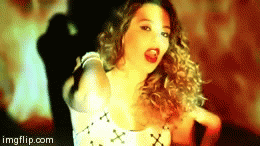
Fall Out Boy establish a punky, energetic band image through performance, whilst ours is slow and smooth, providing the image that Roza is cool, confident, and passionate. Lip-synch and dance are concepts of performance music videos that we have adhered to, all the while trying to convey a specific image of the artist, as videos do. For example, the fire represent her fervent, emotionally driven nature but combined with confident facial expressions they provide challenge to the archetypal submissive female which is prominent in the media. She may be effected by what is happening in her life but in many of our shots Roza is portrayed as a strong, powerful figure.
Concept

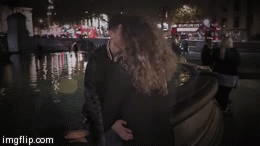
The main character having horns is a clear visual motif for being different, and being alienated because of it in SWGD. It is used as an extended visual metaphor, and similarly in Teen Spirit we used the silhouette shot to represent paranoia and fear, and the back shots to display the emotional effect of her relationship on her in words, to give two examples.
Narrative
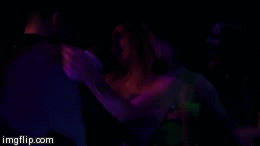
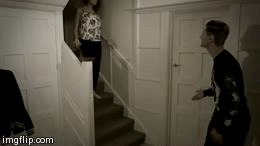


Both narratives are about a relationship having ups and downs, and these are told through a series of montages separated by performance - a convention of hybrid videos which we use in order to play into the audience's expectation. Keeping within certain conventions is essential in order for the audience to be able to understand the video.
The positive parts in both are cut more as a montage whereas the negative parts were cross cut with passionate performance in order to exacerbate the feelings of empathy with the character in the video - for us it is our artist. In doing so we apply Katz and Blumler's Uses and Gratifications Theory, as audiences actively seek to be emotionally synchronised with the characters to relate to them and their everyday lives.
Representation
I believe we provided alternative representation for women in music with Roza's character and how she is portrayed. In so much music today, female artists and females characters in music videos are so commonly sexualised and displayed in a voyeuristic way.
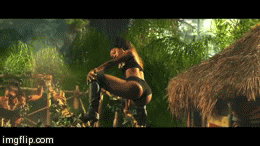 |
| Nicki Minaj in 'Anaconda' - an all too common use of hypersexualising female body as a means to sell music. |
This is done by shots focusing on specific body parts such as the bottom and chest with pans and camera movement on the body, however with Roza we aimed for her to be appealing in terms of appearance but not sexualised, as is an increasingly common convention of the music industry.
 |
| Throwing roses aside scornfully in relation to an agument in the narrative |
Roza is also shown to stand her ground and be fairly tough, displaying some masculine qualities which empower her as a female character; despite going through a lot and being effected she still sticks up for herself.
Style
We also took inspiration from Beyonce in terms of having powerful closeups like this one:
 |
| Makeup for this shot was inspired by Beyonce's If I Were A Boy video, aiming for a 'wet' look |
Website
Our website took a mixture of inspirations from similar artists within the PBR&B genre, mainly The Weeknd and Jhene Aiko.
Uses Conventions
 |
| The bio I wrote for the Roza's website |
Having a poetic styled bio on our website conforms slightly to the convention that female artists are more emotional and expressive of this, to give the example of Jhene Aiko's website, which we took influence from.
Develops Conventions
Develops Conventions
The convention we found with PBR&B artists was that conventionally they would be very minimalist, and this element to their style made them very cool. Browse any of the websites from JMSN, The Weeknd, HowToDressWell, FKA Twigs, Tinashe, Banks, and Jhene Aiko and the simplistic but very visual characteristic of them is evidently consistent throughout the genre. However it is conventional for new artists as a whole, particularly within the mainstream, to need to do more, with lots of images of the artist to showcase their identity and advertise their music and merchandise to further develop this.
We developed this music industry convention by combining it with the relatively new characteristics of the PBR&B genre, which has only really existed for a few years. We felt this is an effective way to be current and trendy as well as leading to more potential for artist success, having so many ways to interact and get involved with Roza and her music, or at least in the way they are laid out clearly on our homepage as seen below:
We developed this music industry convention by combining it with the relatively new characteristics of the PBR&B genre, which has only really existed for a few years. We felt this is an effective way to be current and trendy as well as leading to more potential for artist success, having so many ways to interact and get involved with Roza and her music, or at least in the way they are laid out clearly on our homepage as seen below:
 |
| Confidence in terms of black and white colour scheme like The Weeknd but also quite interactive like R&B artist Misha B's website. |
Our digipak cover conforms to PBR&B conventions by having an image of the artist as the centerpiece of the cover. This is important to do especially for debut artists as they are establishing themselves for the first time and will aim to do this positively.
When looking at a multitude of album covers within the PBR&B genre, we observed the general trend of having quite cold colours on the spectrum, JMSN and James Blake's eponymous album covers being a good example. On many, colour had been muted towards black and white and grey, probably through editing, with FKA Twigs's LP1 being a rare example of visual vibrance. This observation gave us the opportunity to stand out among the genre with eye-catching reds, since it is the colour that arguably shows up most distinctive among the black and white scale.
PBR&B Album Covers from latymermedia2013
I made a SlideShare presentation to show some of the album covers mentioned. Flicking through gives a fairly accurate and representative idea of album covers in the genre
Since the genre is made up of other genres, such as soul and hip hop, the inspirations were took from this variety of areas. With fashionable urban style clothing similar to Tinashe, empowering beauty shots similar to Beyonce, and visual style through our album cover and website inspired by the broad range of artists PBR&B contains, our products use many conventions that are elemental within our genre of music. But we developed these using some of Steve Neale's ideas of genre - that to be a successful product some aspects would have to be recognisable to previous ones but also make changes to stay fresh and exciting to the audience. Having a powerful, unsexualised female within a male dominant, objectifying genre provides that main difference that can make her a positive aspirational figure for females within our audience but still be appealing to males as well.
I made a SlideShare presentation to show some of the album covers mentioned. Flicking through gives a fairly accurate and representative idea of album covers in the genre
Since the genre is made up of other genres, such as soul and hip hop, the inspirations were took from this variety of areas. With fashionable urban style clothing similar to Tinashe, empowering beauty shots similar to Beyonce, and visual style through our album cover and website inspired by the broad range of artists PBR&B contains, our products use many conventions that are elemental within our genre of music. But we developed these using some of Steve Neale's ideas of genre - that to be a successful product some aspects would have to be recognisable to previous ones but also make changes to stay fresh and exciting to the audience. Having a powerful, unsexualised female within a male dominant, objectifying genre provides that main difference that can make her a positive aspirational figure for females within our audience but still be appealing to males as well.

























